- Home
- About us
- Products
- Dealer Enquiry
- Blog
- Contact Us
- Home
- About us
- Products
- Dealer Enquiry
- Contact Us
- 044 -2486 1994
- +91 99623 98222
- sales@nantech.in
- REQUEST A QUOTE

2020 was a rollercoaster ride for the world, effects of which have not wanned off yet and are expected to move onto 2021. Similar to other industries, the power industry also had to face a situation of massive unpredictability, not only in India but the rest of the world too. With threats like climate change and global warming inching closer, countries are ready to take bold steps to counter the threat. Of these countermeasures, changes in the power industry will be at the forefront of the battle.
In India, the government has revised its renewable energy target from 175 gigawatts to 220 gigawatts for 2022. That is a big step towards job creation and achieving carbon neutrality. Objectively, India’s power industry has three main focal points to deal with.
During the pandemic, new light was shone on the viability and stability of working in the IT industry and data center industry. The government has announced the installation of another one crore data center. These centers consume enormous amounts of power, and the power industry is expected to soon, incorporate a hybrid of coal and renewable energy transmission to supply this enormous demand. If planned efficiently, the transparent incorporation of renewable energy sources will greatly cut down on power losses and assist in achieving carbon neutrality. Renewable energy will also assist in data expansion and accommodate a higher capacity for data processing. The power industry will have to go the extra mile to maintain the robustness of its grid system and prevent shutdowns.
Also Read: Can Inverters Save Electricity?
A steady rise in sales and development of electric vehicles has been observed all around the world. Though not officially introduced in India, there have been talks of Elon Musk headed Tesla electric vehicles to start sales in mid-2021 in India. Since they are charged by electricity and houses need to have a steady source of renewable energy to charge the cars. That provides a boost to the upcoming solar inverters market that will help in job creation and environmental sustainability. Along with this, India has developed a single national power system and invested a lot of money in renewable energy making the transition from petrol and diesel to electric vehicles an easy one. In other parts of the world, innovation and development have led to the development of green hydrogen-powered homes and cars which release only oxygen and water vapor as their byproducts. The TATA automobile industry has also collaborated with foreign countries and invested in hydrogen-powered vehicles.
With most countries like The United States of America, The United Kingdom, and China pledging to become carbon neutral by 2050 and so on. India is not too far behind on making the same promise. To achieve this, massive electrification with thoughtful use and incorporation of renewable energy is of paramount importance. Being carbon neutral means absorbing all the carbon a country produces, leaving a net-zero carbon emission. As the consumption of electricity does not produce carbon dioxide, its widescale application has become mandatory.
The future of the power industry in 2021 is going to be dynamic. As the global focus of the power industry is shifting towards renewable energy, we at Nantech will do our best to assist by providing cost-effective renewable energy equipment.
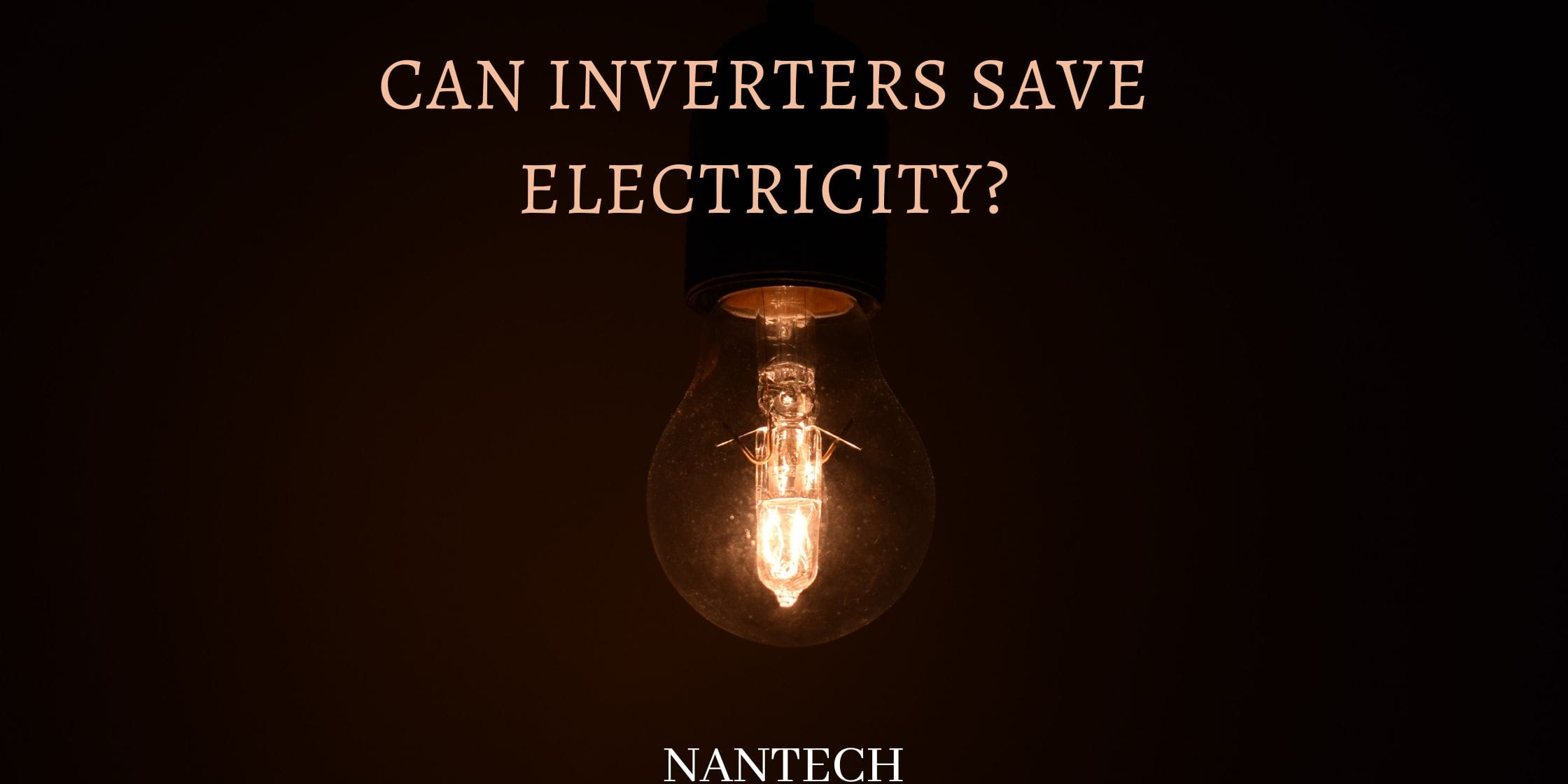
Inverters are devices that are very commonly used as a back-up during a power outage. Chennai faces such power cuts on multiple occasions. Although there is no power supply from the mains during a blackout, inverters keep supplying uninterrupted electricity. Inverters thereby act as reserves of electricity but can they also save electricity? If so, how do they do that? Let us find out.
How Do Power Inverters Function?
Can Inverters Have 100% Efficiency?
How Can Inverters Save Electricity?
How To Eliminate Losses?
It is observed that the higher the inverter capacity, the higher is the loss of energy. Thus, it is recommended to know the power requirement of your residence or workplace.
Also Read: Implications of Power Cut on Smart Homes & Remedial Measures
Overcharging:
Quality check:
Overload:
Maintenance:
Reach out to us if you are in search of an inverter that can 'save' electricity.

Power cuts could prove detrimental to your machinery if they are not properly maintained. Depending upon the reason for the power cut, it has a different effect on the home. If an overload is causing abrupt spikes in electricity, the central power grid may get severely damaged and cause overheating of the appliances. If the power cut is due to undue power failure from the mains, it is usually less detrimental. Still, if it often occurs, in the long run, it may reduce the efficiency of your machinery as it pushes itself to function against the low voltage. Some machines require more energy to start rather than run for long durations. A higher electricity bill is consumed in regular power cuts, and a higher electricity bill is generated.
Power cuts could also be due to faulty wiring and structural weakness in the electricity grid at home. That endangers the lives of the inhabitants of the house and may even damage society's central grid. Faulty wiring is one of the lead causes of electricity-related fires globally and is highly prevalent in Chennai's developing areas like suburbs or rural areas surrounding Chennai. Not to mention; the gross inconvenience caused to the households. Computers may stop working, which may lead to loss of data or inadequate job productivity.
Refrigerators and microwaves might stop functioning, and if this goes on for long, a lot of food might get wasted. If the aqua-guards do not function, potable water might not be available. This problem is severe for Chennaites because of the severe water shortage already existing in the city. So, several issues can arise from power cuts. In June 2019, there was a power cut almost daily, affecting the health of lakhs of Chennaites amid summer!
So, let us take a look at some of the solutions:
Buy and use quality products and maintain them. Faulty wiring or low quality of semiconductors in the machinery itself may cause damage to both the machinery and the home's wiring. Make sure that all wires should be insulated, and the machine should not cause a shock.
If you notice that the current is facing fluctuations, it could be due to harmonic wave interference caused by low lights or switched-mode devices. It is advised by Nantech to install an active Harmonic filter or a servo stabilizer to prevent any power quality-related complications.
Ask your neighbours if they face a similar situation to determine if it is a problem in your house or a defect in the central electricity supply. If there seems to be a central problem, promptly inform the authorities. If it's a problem at home, check using a tester if there is any problem with the machine you are having trouble with. If you suspect some other cause, call a technician immediately.
This will ensure that you will not be a victim of power surges, and most of all, you will be protected from electrocution or fires that may prove to be fatal.
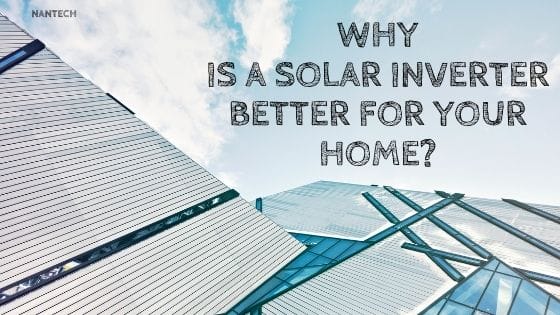
Today, fossil fuels and their by-products are being scrutinized by the world, and the focus is more on greener and environmentally friendly sources of energy. Solar Energy, mainly the use of Solar panels, has gained much traction in this field, It uses Solar Photovoltaic (PV) Cells to capture sunlight and convert that to electricity.
However one must remember that solar panels usually provide Direct Current (DC) energy. Most of our household electrical appliances use Alternating Current (AC) energy. Thus, we need to convert DC to AC, and this is where we use a solar inverter. This device converts the output current from the solar panels to AC energy, which can be used in your house.
Also Read: Aspects To Consider While Purchasing A Solar Inverter
Today, there are three types of Solar Inverter technologies that one can choose from:
In a PV system with a string inverter, the panels are wired together with 'strings,' Each panel's output can be sent back to the central inverter via this 'string.' This allows for a low-cost inverter operation and is durable and easy to maintain. These are best suited for houses with simple roofs that get sun throughout the day and for people looking for an economical and low-cost PV system.
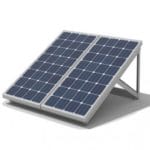 These are different from the string inverter system, and here, the solar panels each have a small inverter installed. Therefore, the conversion from DC to AC occurs right on the roof. The advantage of this system is that for systems that experience shading or have more complex designs, one can use this instead of a string system to mitigate the problems. Furthermore, it allows for panel-level monitoring since each microinverter is connected to the solar panels. These are usually high-cost, high-performance inverters, and hence one must use them for complicated roof constructions.
These are different from the string inverter system, and here, the solar panels each have a small inverter installed. Therefore, the conversion from DC to AC occurs right on the roof. The advantage of this system is that for systems that experience shading or have more complex designs, one can use this instead of a string system to mitigate the problems. Furthermore, it allows for panel-level monitoring since each microinverter is connected to the solar panels. These are usually high-cost, high-performance inverters, and hence one must use them for complicated roof constructions.
These fall in between microinverters and string inverters. These are interfaces located near (or on) the solar panels, which 'condition' the DC output and send it back to a centralized inverter. The advantage is that it helps monitor individual panels, mitigate the impact of shading, optimize the efficiency of inverters, and cost less than microinverters. These are best suited for houses or buildings with less ideal solar panel locations and whose owners are willing to pay a little extra for a better system but don't want microinverters.
Nantech Power Systems Pvt. Ltd provides the best inverters to buy in India, with its excellent product line-up, efficient services, and timely after-sales support. Check it out!

What better time than now to invest in environmentally conscious and economically sound power supply machinery? So, an inverter's basic function is to save electricity when power is available and, on the occasion of a power cut, supply power to run at least the basic machinery and appliances like fans and lights to help the user. Solar inverters like the ones made by Nantech are created using solar power as the inverter's primary power supply.
Off-Grid stand-alone inverters: These are isolated inverter systems usually supplying only a single home or office building.
Grid-connected inverters without battery back-up: Here, all the converted solar energy is stored in a central grid system supplying multiple buildings and acts as a back-up for all these buildings when there is a power- cut. There are no batteries, and these inverters have PowerPoint tracker systems for systemic power generation.
Grid type inverters with battery back-up: An amalgamation of the above two types of inverters.
Offred grid inverters are mostly used for residential users and are capable of supplying enough power for essential needs. However, it is of paramount importance that a customer knows what he is buying to avoid any kind of mishap, whether financial or physical. So here is a list of few things you should keep in mind while buying a solar inverter:
Battery Voltage range: The voltage that can be fed into the battery from sunlight.
DC current: Maximum current which it can handle.
Voltage range: The voltage that can be fed into the inverter by sunlight.
Continuous power output: The maximum time the inverter can produce continuous power at said temperature.
Output voltage: So that it is compatible with your household requirement, which is generally 210-220V.
Frequency: For India is 50 Hz.
Efficiency: The amount of actual solar energy received by the panels converted to electrical energy supplied to our homes. No Machine 100% efficient. We recommend solar inverters with galvanic insolation having an efficiency of 94% and 97% for without galvanic isolation.
No-load power consumption: The amount of energy that the inverter itself uses up without supplying to a load. It is important to determine efficiency.
Surge Power: some machines, like motors, require more power to start than the rest of its run time. We recommend surge value between 3- 6.
Output waveform: We recommend a pure sine wave property for high efficiency.
Maximum power point tracking ability: This system prevents overcharging and under-charging of the inverter.
Output voltage: So that it is compatible with your household requirement, which is generally 210-220V.
Ambient weather conditions: To preferably include your room temperature range and average humidity.
Grid frequency synchronization range: 3 Hz
Ingress protection rating: It is a protection rating, and its minimum value should be IP65.
Power factor: Greater than 0.9.
Data logging software: For user information and convenience.
Inverter warranties: Should have at least a 1-year warranty.
Also Read: A Basic understanding : Solar inverters
It is very important to consider these aspects while making a purchase. Check out Nantech’sline of the solar inverter as their products satisfy the above-mentioned features.
~Happy shopping!
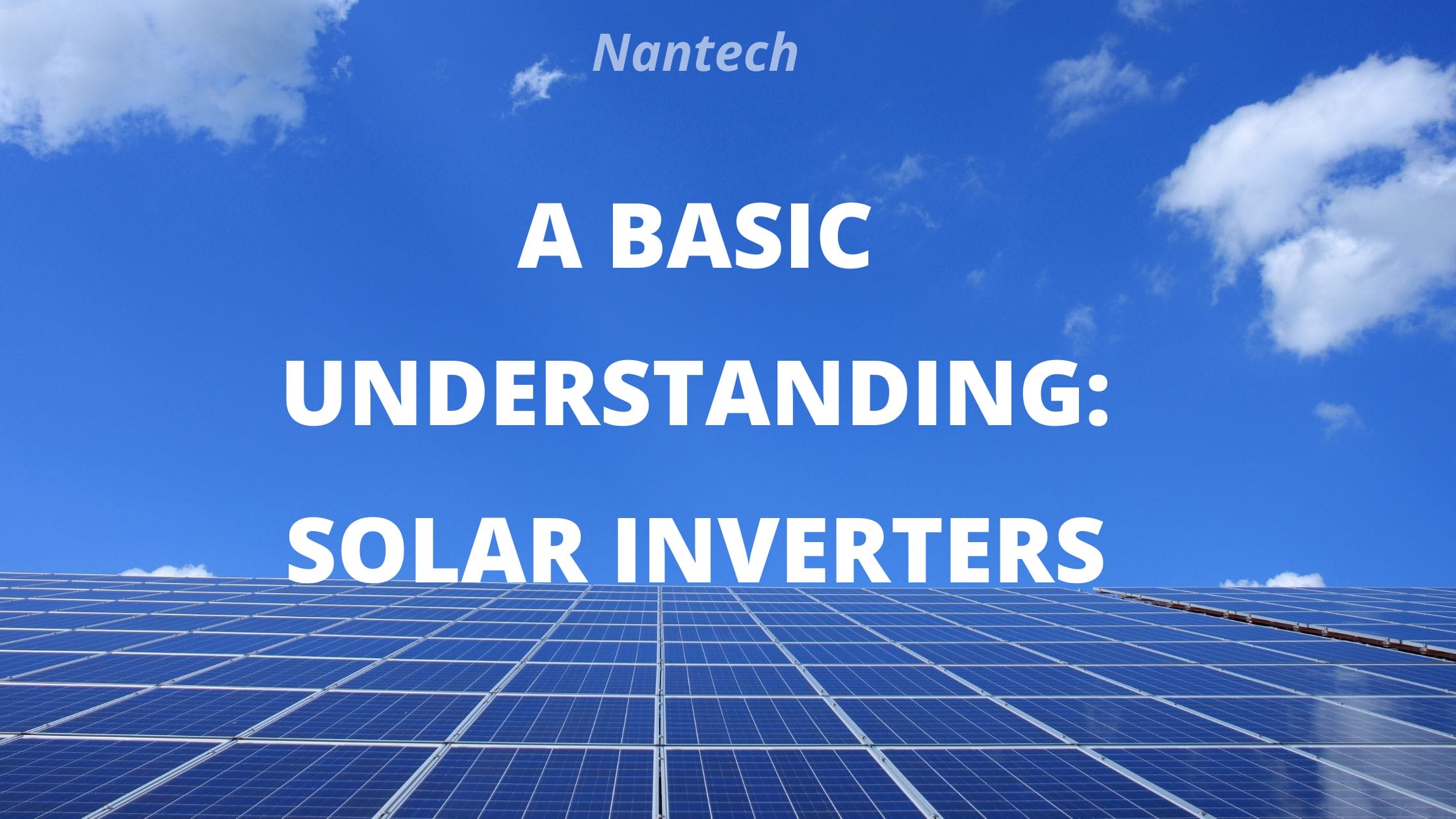
The type of electrical converter that can convert the variable direct current output of a photovoltaic solar panel into a utility frequency alternating current fed into a commercial electrical grid is known as Solar Inverters. Unlike the regular invertors, the solar panel charges the battery using solar power along with the electricity. For supreme efficiency of these solar inverters, systematic and consistent maintenance ensuring their efficacy is required for the long run of the machine.
Solar power installation provides for the benefit of the environment as this process requires no fuel burning and no radiation from energy production. Since it is pollution-free, most of the population will tend to purchase it as protecting the environment is considered the main motto of all individuals who are very well aware of the haphazardness of filthy surroundings.
The electricity generated from the solar panel can be used for smooth functioning of all electronic appliances in the home. The exorbitant current bill, which is unaffordable to middle-class people, has become more conducive to a solar heating panel. Sudden reduction in electricity bill makes everyone purchase this solar inverter as it reduces the cost of living and provides enough money for savings. It is the main heating mechanism of all homes, especially in foreign countries. Most housewives find cooking in solar energy less tiresome and an enjoyable pastime making the work less monotonous. Solar power cars are already in the market, which invariably reduces the fuel cost.
Since the sun is visible throughout the year, solar energy is a continuous process, and we cannot be in shortage of it at any point of time.
The electricity bill of houses reduces to a considerable extent after installing solar panels, which makes it more reliable and to gain more future buyers.
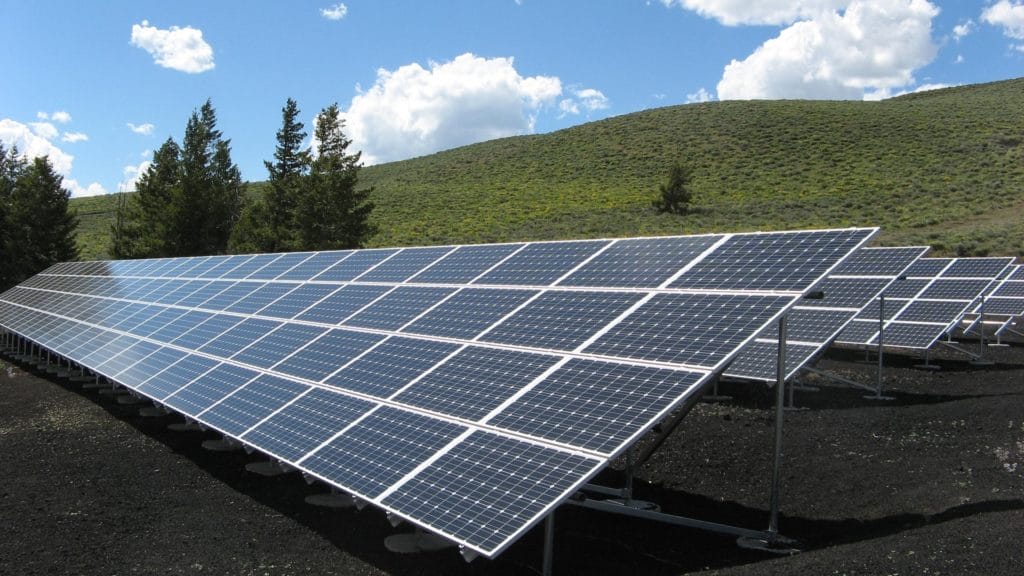
Greenhouse gases like carbon dioxide and methane, which cause pollution, are not caused by solar energy, making it eco-friendly.
We can store solar energy by increasing the number of batteries, which can be later used on a cloudy or a rainy day.
Once the solar power installation is done, it easily lasts for more than twenty-five years, reducing the maintenance cost.
It is extremely difficult to collect solar energy on a rainy or cloudy day as its efficiency decreases to such a low level during these days even though the energy can be stored through batteries.
To fit many solar panels, ample space is required in the roof area of the house. The place where the solar panel is kept should be accessible to exposure to direct sunlight. Hence solar inverters should be fixed only in places congenial for this.
Since solar inverters can't convert all their available energy into power, 100% efficiency is not arrived at by the constant use of these solar panels.
To put it in a nutshell, solar energy, which is gaining popularity through its technological development, will take some more years to reach the peak of its utility and to improve the quality of our life. By 2050, we can expect every single house to have a solar panel installed on its roof, which makes it an essential set up not an option.
If you are interested in purchase to check out Nantech’s ON-GRID, OFF-GRID and solar street light inverters.
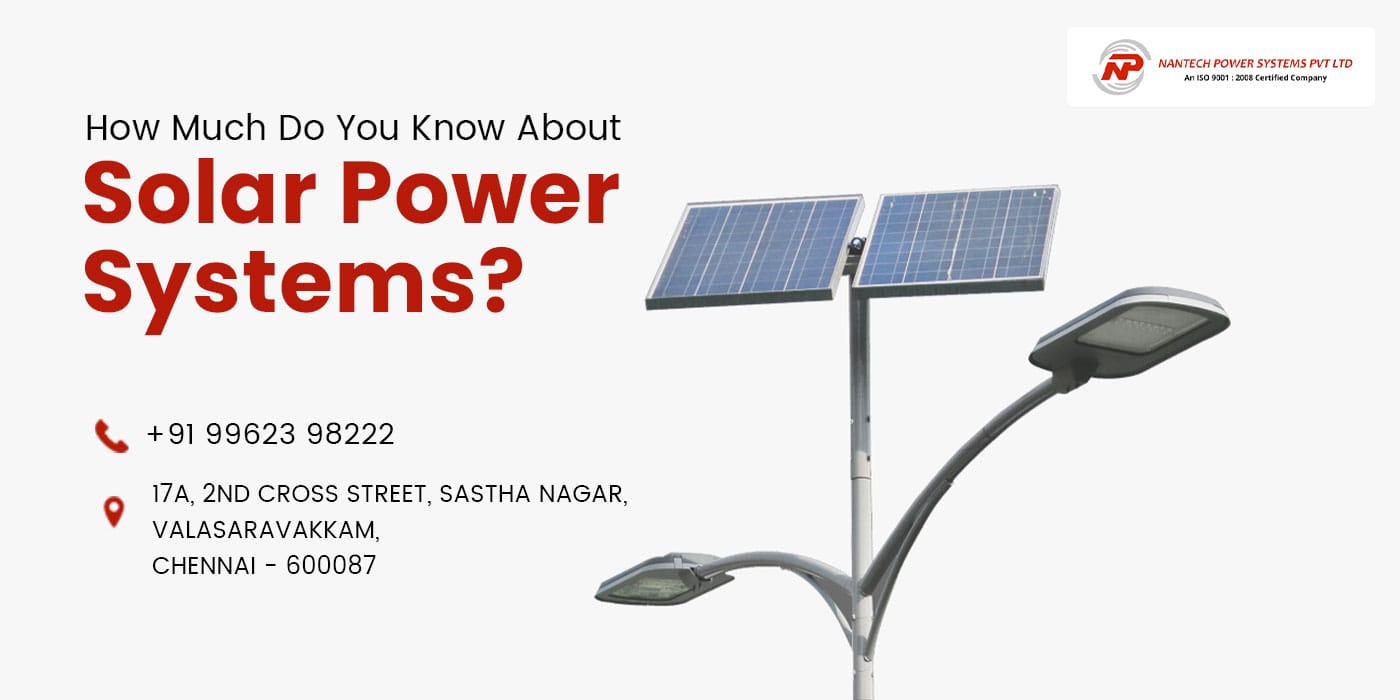
Installing a solar power system has become a fascination, a luxury and a necessity. Why waste the energy of the sun when you have it in abundance? When it comes to investing in solar power systems, the first and foremost thing is to understand everything about the solar power system- how it works, its components, its types, the various systems, etc.
This knowledge is crucial in making a choice between the Off-Grid and On-Grid solar power systems, which is quite often the big dilemma. So, what is the solar power system and how does it work?
Generated by the sun, solar power is sustainable, clean and usable energy. Irrespective of where they are used, all solar systems work on the same basic principles. The solar panel is the primary component of the solar power system. The solar panels convert direct sunlight into Direct Current using the Photovoltaic effect. The DC power is either stored in a battery or converted into AC power and used to run appliances. This is just the entire process in a nutshell!
There are four main components of the system that are common to all the types of solar panels available today:
Modern solar panels are made of PV cells or Photovoltaic cells, which are crucial to initiate the process of electricity generation. Solar panels or solar modules are connected in strings to form a “Solar Array”. To maximize the use of your solar panels, consider its orientation, tilt angles, and efficiency. Solar panels require uninhibited sunlight to fall directly on the panel. Panels require daily maintenance, and proper installation to work without a hitch.
The solar inverter plays a critical role in converting the Direct Current to grid-compatible Alternating Current which is what you use in your homes and commercial establishments. From a reliability perspective, the inverters are vulnerable, because they are the weak link in this system. Hence is it vital to choose a good quality inverter.
There are two kinds of batteries used for solar energy storage:
The electric switchboard is a handy component that collects the AC energy from the inverter and disperses it through various circuits to power your home appliances. Any excess electricity is sent back to the grid through an energy meter or stored in a battery for later use. This is commonly known as Net Metering.
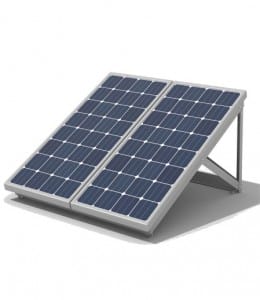 But that’s not all! Apart from the above-mentioned components, there are so many more basic parts that combine to make the entire solar power system. They are:
But that’s not all! Apart from the above-mentioned components, there are so many more basic parts that combine to make the entire solar power system. They are:
Also Read: Are We An Electricity-Surplus Nation?
Ever since its invention, the solar power system has evolved into three types:
To arrive at a proper conclusion to the dilemma of choosing between the three types, you actually have to gain a clear understanding of what they actually mean.
The On-Grid System
When your solar power system is connected to the common utility power grid, it is an On-Grid system. Most solar power systems in India are on-grid systems, mainly because they are easy to install and very economical. Solar systems that power residences are often connected to the common utility grid. Any excess electricity that your on-grid system produces can be sent to the grid, allowing you to build enough credit that you can cash out at the end of the year or month. This is an effective process called Net Metering which is very conducive for solar power owners who are looking to generate ROI.
The Off-Grid System
An Off-Grid system empowers you to be 100% self-sustained because yours is a stand-alone system that is not connected to any grid. This system allows you to store excess electricity that will come in handy at critical times. However, there is a downside to the off-grid system. It calls for heavy investment because of the complex installation that uses expensive, bulky batteries. The expenses itself can be a hurdle to gaining the actual amount of electricity you require.
The Hybrid System
The hybrid system is a clever combination of the off-grid and on-grid systems that offer an easy “plug and play” solution. With the use of special hybrid inverters, the excess energy is stored for later use. The hybrid system is quite similar to your UPS system since it serves the same purpose of providing stored energy in case of a blackout.
Take a look at just a few of the stark differences of the off-grid and on-grid solar systems:
You are completely safe with the on-grid system because you can be assured of a consistent power supply. But the off-grid system is not so promising. With limited battery backup, the off-grid system relies entirely on the power of the sun to generate electricity. You wouldn’t want to encounter such a dilemma on a rainy day, would you?
The on-grid system not only allows you to draw stored energy from the grid when you need it but also generates an income with Net Metering where you are credited for the amount of electricity your system generates. With off-grid systems, you do not have the advantage of net metering and you need to invest in plenty of batteries to store the excess energy.
Power supply during an outage
This is where the off-grid system has the upper hand because it is completely independent. The on-grid system will work during a power outage only if it has a battery backup.
Yes, there will be a few changes in your electricity bill even if you own an On-grid system. The off-grid system is not tied to a grid, so there are no bills. However, the cost of installation can go through the roof because of the equipment.
What’s the verdict?
In India, the implementation of Net Metering and open access has boosted the adoption of On-grid solar power systems. However, the Off-grid system is a better choice for usage in remote areas where the utility grid is unavailable or inaccessible.
Nantech Power Systems Pvt Ltd, the leading inverter dealers in Chennai, give you expert guidance in choosing the right solar power system for your home or commercial building. Our reliable solar power systems are exceptional in quality and backed by warranty. Waste no time! Call us today @ +91 99623 98222 to harness the power of the sun!
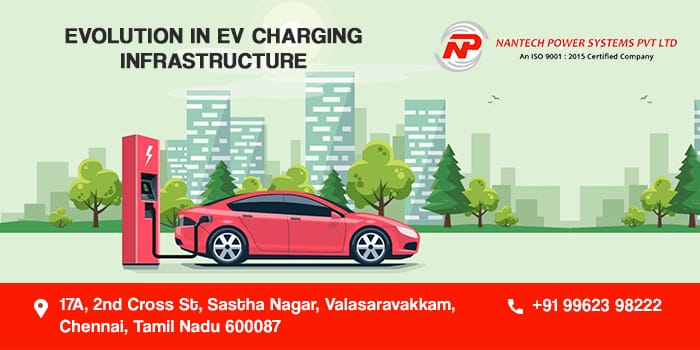
Reducing carbon emissions is going to be one of the major focuses of the government. To strengthen the effort, the Government of India has taken initiatives to increase the possibility of E-Mobility. Companies are now focusing on developing electric vehicles and the development of charging stations plays a major role in the widespread growth of EVs. As per a study, India will have around 8 million public charging facilities and 79 million electric vehicles plying on the roads by 2030. As the leading EV charging solutions in Chennai, Nantech Power Systems commits to producing sustainable and reliable premium, public, commercial, and residential comprehensive EV charging stations.
Also Read: The EV Revolution: Is Chennai Ready For It?
The transport sector accounts for 40% of total fuel consumption and in this, 90% is used for road transport. The state and central governments are now adopting slow regulations and policies to promote the use of EVs. Lack of public charging facilities is a major hurdle the EV industry faces while convincing prospective buyers. Most of the charging takes place either at work or at home. Electric vehicle charging infrastructure or EVCI needs to be increased as getting stranded with empty batteries. Successful transition to e-mobility requires affordable, accessible, and reliable EVCI.
The government has followed international standards in developing an Indian specific standard called Bharat Charging. For the successful adoption of E-Mobility, the government has been adopting new regulations, incentives, and taxation policies. They must also take care of consumer education measures. Such initiatives are required to boost consumer confidence and increase partnership in developing electric vehicle charging infrastructure. Developing charging stations is a major challenge which the government will be taking initiative along with major players in the field.
There are different types of charging infrastructure which is renewable charging hubs, charging stations in communities and charging stations in office sites. Developing such a charging infrastructure is indispensable to eliminate barriers in adopting EVs. EV solution providers can set up charging infrastructure on a company's campus for its employees or they can tie up with real estate developers to set up charging stations within their properties. The Government of India has drafted a plan to set up 2636 EV charging stations in 62 cities, including Chennai, across all states and union territories by 2023. The decision has inspired many private and state-owned power utilities industries to enter the business of improving charging infrastructure.
Agreements are being signed with battery manufacturing companies and swapping companies to initiate infrastructure development. There is a need to maintain a balance between demand and supply and innovative and meaningful collaboration with key stakeholders will help in a long way. A demand aggregation model is devised to create a boom in the market to increase mobility services and charging infrastructure. The different demand aggregation models are led by the private sector, discom, and public sector. Battery swapping will bring down the initial cost of EV to half its price.
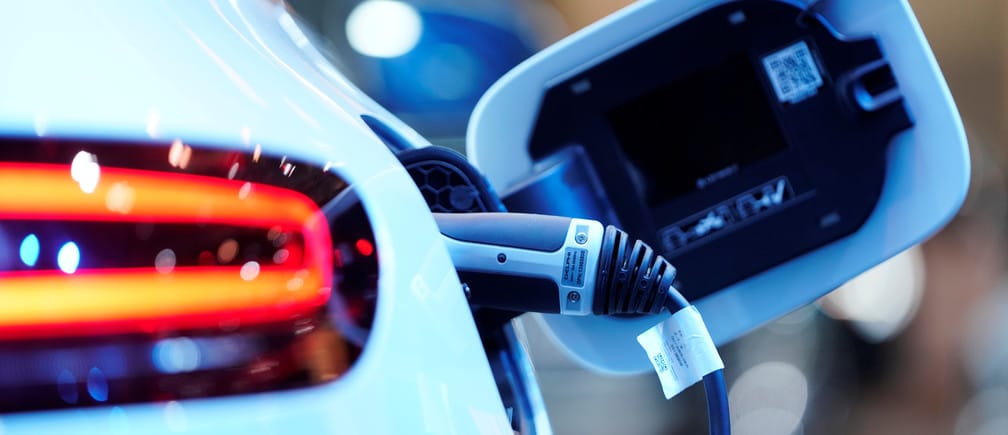
Initiatives are undertaken to have solutions to enable battery swapping affordable and done in less time. For four-wheelers, fast DC charging is the best option available. Four-wheel electric vehicles are not designed for implementing battery swapping. Indian automakers need to develop electric four-wheelers that are compliant with battery swapping. Post-COVID era will see a shift from public transportation to 2 wheelers and 3 wheelers and the battery swapping segment will find a good market as they enable electric two and three-wheelers. India has developed two standards for AC and DC charging, namely, Bharat EV Charger DC-001 and Bharat EV Charger AC-001.
The standards have recommendations and specifications for charging electric vehicles. It is expected that AC vehicles will continue for around 5 to 8 years as we kick start the electric vehicle industry. The electric two and three-wheelers manufactured in India have AC charging. Some electric cars also have AC charging fitted. In a cost-driven economy like India AC chargers are a huge advantage as they are much cheaper and manageable when compared to DC charging. DC charging is expected to gain momentum in the second half of the decade. DC chargers will be able to service multiple vehicles and will be a cost-effective option even if one unit sells at a higher price. With new technology, the price of DC is dropping and will soon outweigh the advantages of AC technology.
As technology evolves in the power sector, the government is expected to promote the use of renewable sources of energy in charging electric vehicles. The future of E‐Mobility depends on combining renewable sources with charging and battery storage. Setting up a solar power plant for DC fast charger of 25kw to 100kw batteries at public charging stations will be a huge challenge as it will involve huge amounts of expenditure. A solar plant requires huge space and it could be a challenge for setting charging stations in the city. The Faster Adoption and Manufacturing of Electric Vehicles in India or FAME 2 will also focus extensively on electric vehicle charging infrastructure.
E-mobility services will initially take off in rental services or ride-hailing services in the Indian cities, especially Chennai. With the current circumstances, this will help Indian cities to skip combustion-powered private vehicle ownership. This will help educate people on EVs and also create awareness amongst the general public. The electric vehicle industry should be able to convince people that their product is as reliable as combustion-powered vehicles.
People need to be convinced that they won’t be left stranded without battery power in the middle of nowhere. A real-time, transparent solution needs to be developed to allay fears of the consumers. There should be a platform where car owners can check the status of the battery, record data and view the nearest EV charging station. The government should also take effort to reduce GST on charging components and swapping services the same way as they did on electric vehicles. It will reduce cost and benefit consumers.
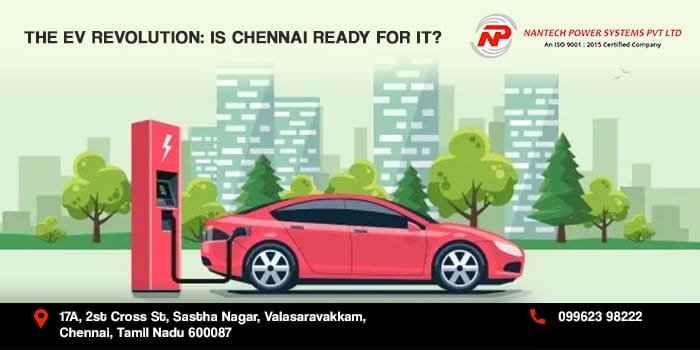
It is an interesting fact that 87% of Indians are ready to make the transition from fuel-powered vehicles to electric vehicles. The reasons can be varying. It can be a conscious eco-friendly decision, or the comparative affordability of the EV as opposed to spending or fuel, or just a simple desire to own an EV!
Whatever said and done, is Chennai geared up to meet the EV revolution? As much as there is the drive to own an EV, the accessibility to a charging station is still a huge barrier.
As per the policy norms of the state government, one charging station is to be set up every 25kms on either side of the national and state highways. The government is also actively encouraging private charging service providers to opt for renewable power sources to supply this growing need.
What is it that has to be done to make Chennai ready to face the consumer requirements for EVs? Let’s take a small detour and focus on the international EV market.
The electric vehicle revolution has spread far and wide in the countries of the USA and China. The entire European continent has embraced electric adoption. In spite of its wide acceptance, the EV did not have a red carpet welcome as you would’ve imagined.
It was heavily criticized for three aspects: charging, speed, and range. Companies worked day and night to resolve these issues with remarkable improvement in battery and automobile technology. Innovative firms gave them the much-needed support to push the EV market to where it is now.
What really gave the EV market a new lease of life were these factors:
Government policies
Charging infrastructure
Creating consumer awareness
Development in battery technology
Expansion of production capacity
Today, China heads the list as the world’s largest electric car market, followed by Europe and the USA. Norway leads as the biggest shareholder in the EV market.
Also Read: What Are The Business Opportunities That Come Hand In Hand With EV's?
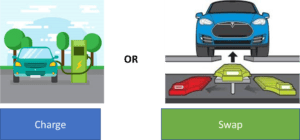 Now, the big question is this: What can we implement from the international arena to amplify and broaden the EV market in a metropolitan like Chennai?
Now, the big question is this: What can we implement from the international arena to amplify and broaden the EV market in a metropolitan like Chennai?
The first step to getting this show on the road is to have ample numbers of charging infrastructure.
Chennai has only a handful of community charging points. And that is not enough for a city of this size, population, and popularity.
How can we widen this network to make EV charging points accessible to all?
Targeting public places:
Chennai is chockablock full of restaurants, malls, cafes, coffee shops, supermarkets, cineplexes, gyms, and entertainment zones. Not to forget the endless list of colleges and educational institutions, coaching centers, and hostels.
These are prime spots to set up charging points and encourage the public to go electric.
Fuel stations:
Fuel stations are ideal points to charge EVs, just like fuel-powered vehicles. Cars can be left to charge while the owner uses the time to deal with other businesses.
Role of Nantech in Chennai’s EV market:
Nantech Power Systems Pvt.Ltd is the best EV charging solution in Chennai. With all your EV charging needs under one roof, Nantech provides you with home and office charging, midsize charging for pit stops and restaurants and full size charging for heavy vehicles.
The EV ecosystem is very much in its initial stages in India. Its growth will be dictated, affected, and controlled by numerous factors. And the reason that our country is vastly different from China and the USA in terms of urbanization, road infrastructure, electricity supply, and just the very mindset of the masses can have incredible effects.
Key Aspects
Embracing electric mobility:
EV charging companies are looking at various aspects to drive electric mobility:
Changes to encourage the growing EV ecosystem:
A big reason why Norway is a global leader in the EV share market is because of the country’s EV incentives and government policies. In Norway, EVs are exempted from road taxes, purchase taxes, and Value Added Taxes.
There are even dedicated lanes for EVs, free electricity, and free charging points across the country. Now, that is the kind of atmosphere that is conducive to the growth of the EV ecosystem.
What we in India require are:
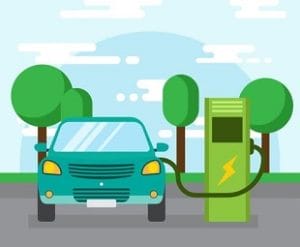
If you are travelling in your EV from any part of the country to the city, always keep in mind that Nantech Power Systems Pvt Ltd is the best EV charging solution in Chennai. Your one-stop destination with all the facilities for EV charging under one roof!! Visit our website https://www.nantech.in/ to get more information!
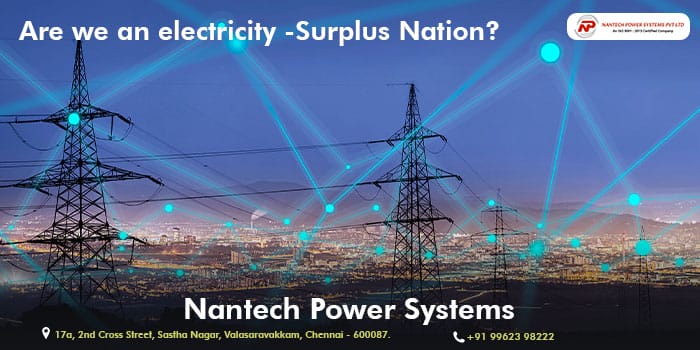
As per the facts on Wikipedia, India is the third-largest consumer of electricity in the world. Not only that, but we are also the third-largest producer of electricity. As of March 2020, the national electric grid has an installed capacity of 370.106 GW.
The number sounds impressive, but how does that translate in terms of India being an electricity-surplus nation? For the simple consumer, that question will translate as “How often will I have to endure power cuts?”
The reality is that India is always facing a deficit of electricity. In spite of the numerous government policies, electricity production is unable to meet its target. Besides that, there are a plethora of woes that are plaguing the electricity sector in India according to https://en.wikipedia.org/wiki/Electricity_sector_in_India#Problems_with_India's_power_sector
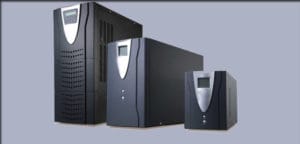
The unequal distribution of power between all electricity consumers is one of the reasons for the erratic power supply. This is one of the main factors that drive the demand for other temporary sources of electricity like the UPS, inverter, and diesel generators.
Wikipedia facts state that there are over 10 million households across India that rely on the ever-reliable UPS as back-ups in case of load sheddings and monthly power shutdowns. UPS imports run to the tune of nearly $2 billion per year.
It takes no rocket scientist to conclude that the mounting demand for electricity and the yawning gap in supply and distribution are the driving factors of the UPS and Inverter industries. What else are the factors besides this?
Pollution is also seen as an influencing factor that drives the demand for UPS and inverters. In New Delhi, diesel generators have been banned due to the sharp rise in pollution levels. As the only alternative source, the UPS has turned out to be the savior in many households and businesses across the capital.
The UPS and inverter market in India has witnessed exponential growth and there is nothing that will hinder it in the foreseeable future. There has been an increasing demand for inverters in the industrial sector too.
The stinging truth behind this is the pathetic, unreliable state of our national grid that is inadvertently pushing the demand for temporary power sources. Besides, there is more awareness of the need for backup sources. There is also the likelihood of an increase in power cuts. Industries simply cannot afford to sit through power outages. It is a sheer loss of time and money.
The Advantages Of Having A Reliable Inverter And UPS
Are you impressed with the list of advantages of having an inverter and UPS? Is your business in Chennai suffering from unpredictable power cuts? Nantech Power Systems Pvt.Ltd is the leading inverter battery dealer in Chennai. We are the perfect answer to all your electricity woes. Nantech caters to both domestic and commercial customers. We deliver high-performing inverters and UPS of well-known brands along with maintenance-free service. To know more give us a call at +91 99623 98222.
The Covid-19 situation has caused stagnation in all the industries with no end of this woe insight. However, it is reassuring to know that things are looking good for the UPS and inverter industry in the post lockdown scenario.
What can be expected?
What are the positive outcomes of this situation for the inverter industry?
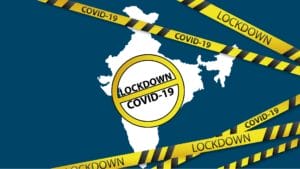 The CEOs of leading inverter and battery industries are predicting a positive rebound of this sector in the post lockdown period. Rough estimates predict that the automotive industry alone could contribute to more than 50% of total revenues. The replacement of worn out and defunct batteries may account for 45% of the revenue.
The CEOs of leading inverter and battery industries are predicting a positive rebound of this sector in the post lockdown period. Rough estimates predict that the automotive industry alone could contribute to more than 50% of total revenues. The replacement of worn out and defunct batteries may account for 45% of the revenue.
Experts believe that the demand for automotive batteries and replacements in the industrial sector will help to sort out the stagnation of the inverter industry.
The other positive aspects are:
Hence, there will be a slow but sure rise from this grim situation for the inverter industry. If your car battery has died down and you need a replacement, Nantech has the right solutions for you. We cater to all industries and domestic demands in the nooks and corners of Chennai and beyond. Waste no time in contacting us by phone - +91 99623 98222 or by email- sales@nantech.in.